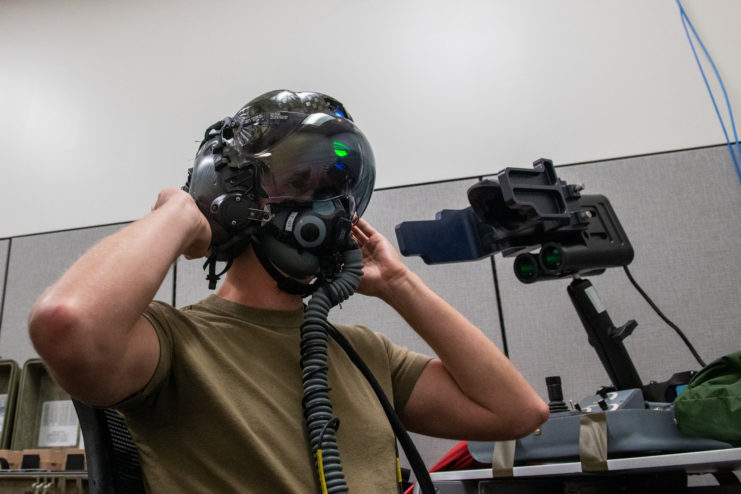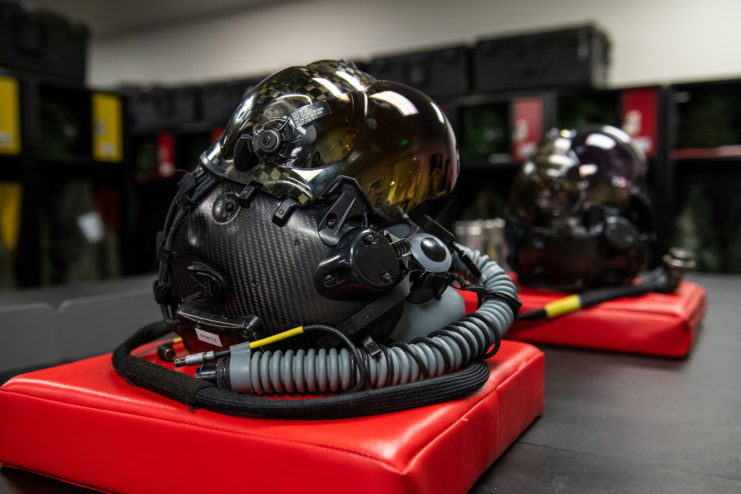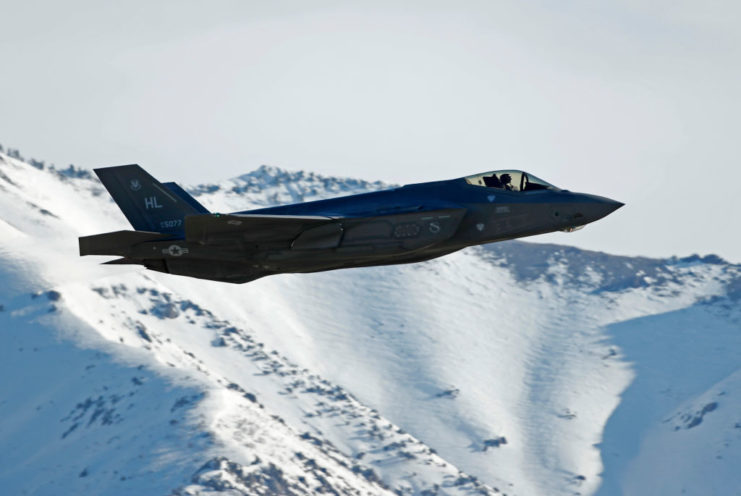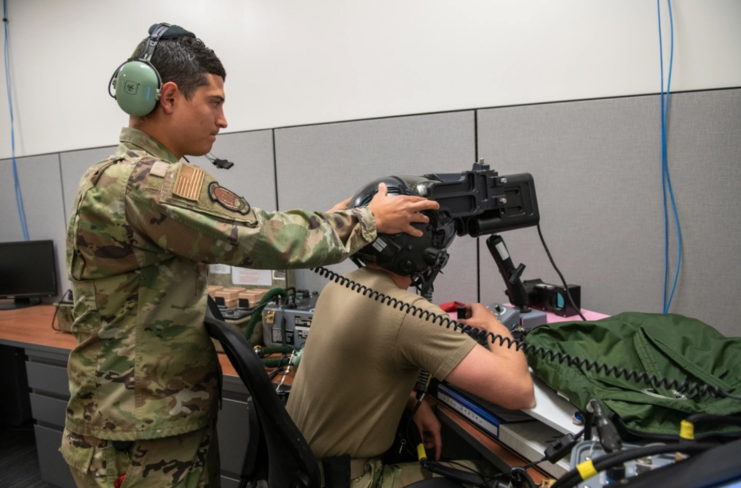5 Facts About the F-35 Helmet – It Costs More Than a Ferrari!
The Lockheed Martin F-35 Lightning II – better known by its nickname the “Panther” – had its first flight in December 2006, and has since become an integral part of the US military. The Marines, Air Force and Navy all use the aircraft, and there are plans to purchase 2,456 between now and 2044. Not only is it a technological marvel, the helmet its pilots wear is also a feat in and of itself.
Here is why the F-35 helmet is so special.
The fitting process is intense
Once pilots are set to fly an F-35, they have to undergo the process of getting fitted for their helmets. The fitting is a two-day process, where the pilot’s head is scanned and measured. For all of the features of the helmet to work, the headgear must fit perfectly.
As an Air Force press release reads, once the helmets are assembled, “pilots need to have the optics aligned using a pupilometer, which measures the distance between their pupils within two milimeters of its center, so pilots see a single image on the helmet-mounted display.”

The display provides pilots with mission-critical information, and allows them to “obtain enhanced situational awareness of the battlefield simply by moving their head.” This gives them a 360-degree view of their environment, without needing to maneuver the F-35 in any particular way.
To ensure there is adequate oxygen flow to the pilot, each is sent to an oxygen tester to identify any potential leaks. “The next part is to ensure there is a proper distance between the mask and the visor,” said Staff Sgt. AJ Arteaga, aircrew flight equipment reservist with the 419th Operations Support Squadron (OSS). “We have to make sure when the pilot moves or talks, the mask doesn’t hit the visor. If it’s too close, it will bend the visor and distort the display image.”
Pilots have to be very careful about their appearance
Once the pilots are fitted for their helmets, they have to make sure nothing about their appearance changes. As Staff Sgt. Arteaga explains, “Pilots come in and put on all their gear so we can double-check to make sure everything fits properly and without issue. Small things such as a new haircut or a couple of pounds gained could cause the helmet to not fit correctly.”

Of course, pilots don’t change their hairstyles all that often, and being in the service generally means they’re going to stay in good physical condition. Still, the Air Force makes sure. The helmets are checked every 105 days, and there’s a 120-day fit check to ensure they’re still safe to use and functional.
Pilots should get used to their headpiece
While the fitting process for the helmet is lengthy, it’s also likely a one-time deal. After a Marine Corps pilot’s head is measured, they receive a styrofoam cap molded to their head that is kept throughout their career.

As a Marine Corps press release stated, “The use of laser scanning technology creates an exact replica of a pilot’s skull, thereby fabricating a portable styrofoam helmet liner that is a break-through above and beyond the traditional custom-designed helmet for each pilot.
“This styrofoam cap fits into any size helmet, enabling a pilot to take the helmet liner from squadron to squadron for use throughout his or her career, optimizing the flexibility of the pilot flight equipment inventory, eliminating risk of damage to helmets during squadron transitions, and reducing investments in large inventories of helmets.”
The helmets have some serious technology built into them
Having a helmet with the very latest technology could mean the difference between life and death. That’s why F-35 helmets are absolutely loaded. As aforementioned, the display on the helmet allows the pilot to process absolutely everything around them with little movement.
As well, “the pilot can look down through a portion of their wing and see what’s below,” according to Tech. Sgt. William Vass, 419th OSS. “When they look toward the cameras embedded on the F-35, that image projects onto their helmet display.”
The best explanation of the technology comes from Major Justin Lee, who said the following in a recent video, “Imagine if you’re in a car, you’re driving and you want to eat pizza. It will put a triangle over all the pizza restaurants. Obviously, we’re using it in a different way, but the helmet allows us to synthesize large amounts of information.”
F-35 helmets are incredibly expensive
One of the most notable things about the F-35 helmet is the enormous price tag. The headgear comes in at an astonishing $400,000 – or about the cost of a Ferrari sports car. As such, the pilots develop a bond with their helmets and do their best to take care of them.

Despite the helmets being custom molded, they don’t actually belong to the pilots. As an unnamed source told The Drive in 2021, “We – the aircrew – don’t own our helmets. While they are custom-fitted to us and you are pretty much tied to that helmet, it’s not technically yours.”
The post 5 Facts About the F-35 Helmet – It Costs More Than a Ferrari! appeared first on warhistoryonline.
Post a Comment
0 Comments